I have written about ariocarpus before, but it has been a while, so some of you may not be familiar with this plant.
Fall is their blooming season, as you can see here. Ariocarpus retusus is not a plant you will find at the big box stores, but it is worth ferreting out at specialty cactus and succulent nurseries. It started out with these two blooms on October 14th, followed by another on the 17th:
and adding two more for a total of five on October 18th.
This ariocarpus is native to Mexico, but there are others that can be found in South and West Texas. Ariocarpus are pretty easy to keep, but they are slow growers and usually don’t bloom until they are ten years old or more. I have had this one since 2012, so it was obviously a few years old when I bought it. Conventional wisdom says to water in the summer, keep dry in the winter, but I water mine a little in the winter, especially when they are blooming. If you are ever in doubt, always err on the side of dry. Like all cactus, they need good drainage and a limestone-based growing medium.
This ariocarpus trigonus I have had since 2004 and it blooms every year and is blooming now with three flowers.
The first picture below is of the a. retusus; the second is the a. trigonus. Look closely and you will see that while they are similar in shape, there is a difference in the two plants. Blooms are also a bit different. All ariocarpus have no spines and while they are fleshy, that flesh is very hard. They are really quite interesting plants.
I have been told that some ariocarpus could be planted in the ground in my garden outside. I am not willing to risk it. After all, it’s a bit hotter in the winter in Mexico than it is here, and as long as it took me to get them to this size and stage, I am not willing to find out if they can make it through a Muleshoe winter. So mine are in the greenhouse for the winter, cozy and protected. But they will go outside when it warms up.
If you are looking for an unusual plant and have lots of patience and a sunny spot for it, ariocarpus might be just the plant to add to your collection.
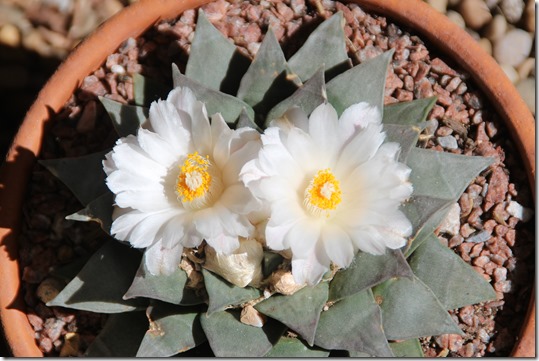
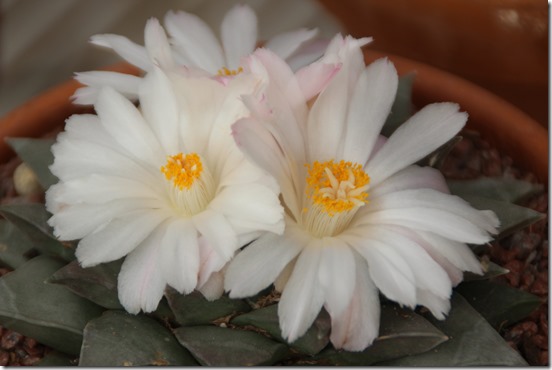
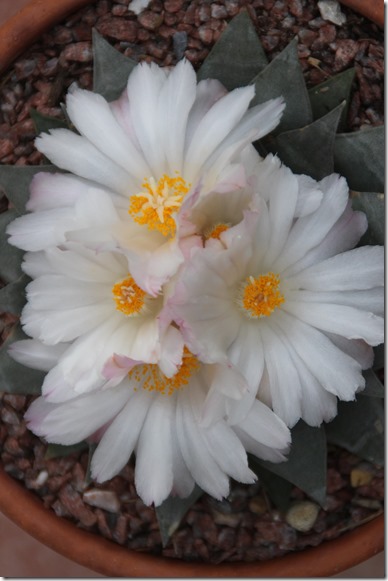
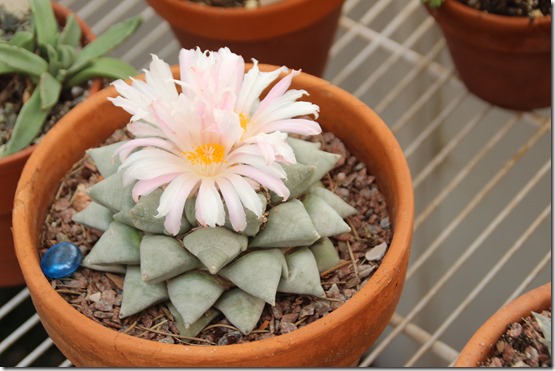
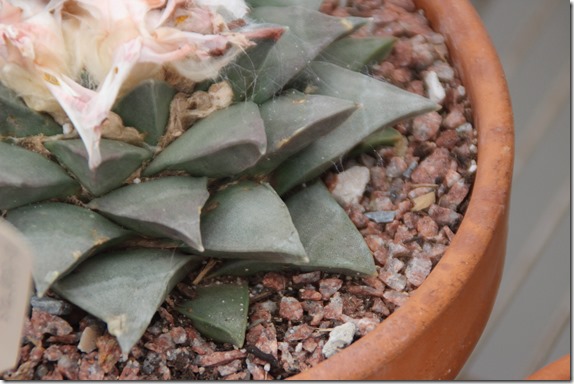
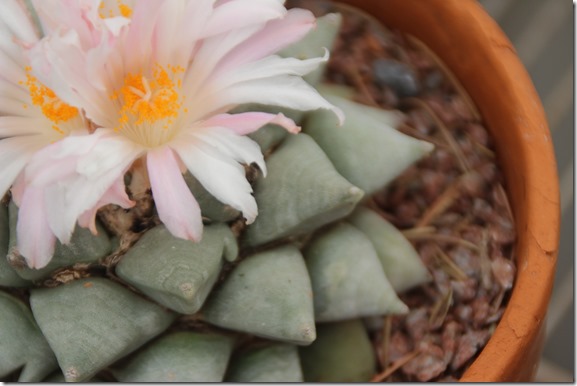
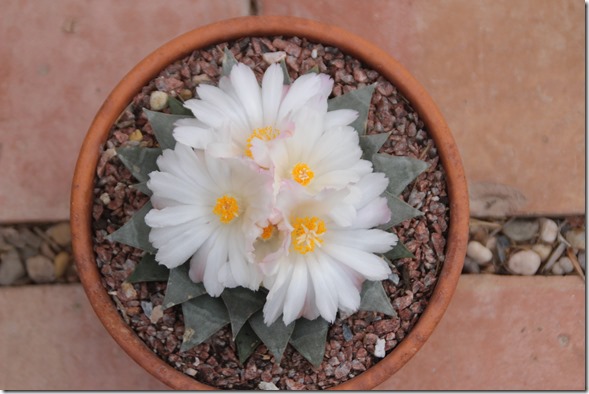
Recent Comments